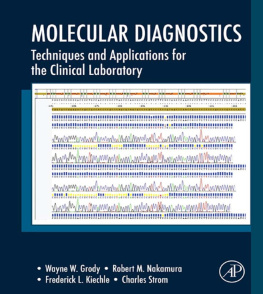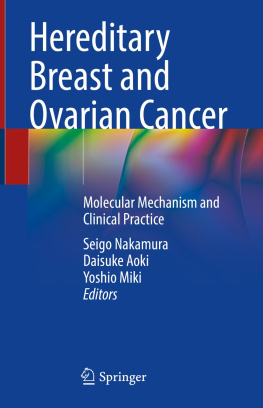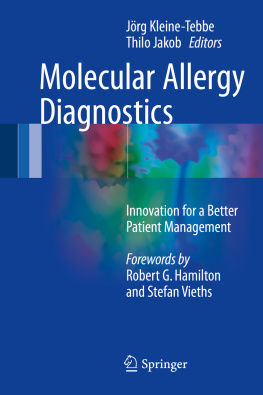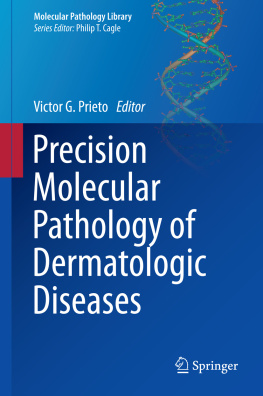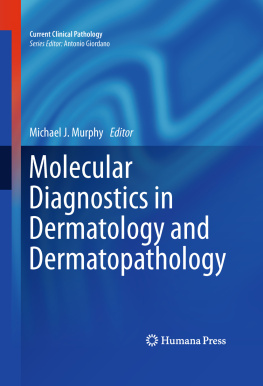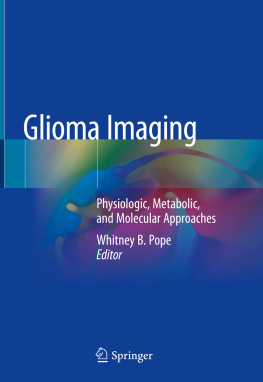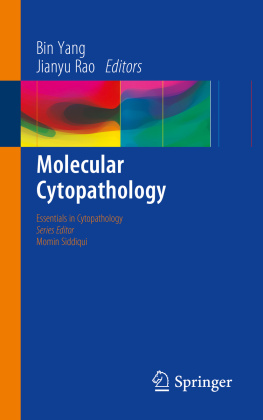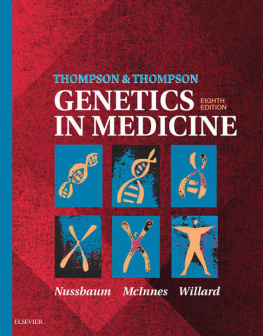Copyright
Academic Press is an imprint of Elsevier
32 Jamestown Road, London NW1 7BY, UK
30 Corporate Drive, Suite 400, Burlington, MA 01803, USA
525 B Street, Suite 1900, San Diego, CA 92101-4495, USA
Copyright 2010 Elsevier Inc. All rights reserved
No part of this publication may be reproduced, stored in a retrieval system or transmitted in any form or by any means electronic, mechanical, photocopying, recording or otherwise without the prior written permission of the publisher.
Permissions may be sought directly from Elseviers Science & Technology Rights Department in Oxford, UK: phone (+44) (0) 1865 843830; fax (+44) (0) 1865 853333; email: for further information
Notice
No responsibility is assumed by the publisher for any injury and/or damage to persons or property as a matter of products liability, negligence or otherwise, or from any use or operation of any methods, products, instructions or ideas contained in the material herein.Because of rapid advances in the medical sciences, in particular, independent verification of diagnoses and drug dosages should be made
British Library Cataloguing-in-Publication Data
A catalogue record for this book is available from the British Library
Library of Congress Cataloging-in-Publication Data
A catalog record for this book is available from the Library of Congress
ISBN : 978-0-12-369428-7
For information on all Academic Press publications visit our website at www.elsevierdirect.com
Typeset by Macmillan Publishing Solutions
www.macmillansolutions.com
Printed and bound in United States of America
10 11 12 13 14 15 10 9 8 7 6 5 4 3 2 1
Foreword
Wayne W. Grody, M.D., Ph.D.
Los Angeles, California, USA
Molecular diagnosticsmolecular pathologygenomic medicine: It wasnt all that long ago when these terms were unknown in the medical lexicon, and in fact would have sounded at best unintelligible to most practitioners, or at worst like oxymorons. But the last 20 years have seen, at last, the long-promised marriage of molecular biology with clinical medicine, with a consequent explosion in molecular test volume and variety, and broad awareness of their existence among both physicians and the lay public. It is now unusual to read a paper in any of the major medical journals that does not include some molecular procedure in its Materials and Methods section, while a new generation of journals, books, and professional societies devoted entirely to molecular diagnostics has emerged.
Why, then, the need for another book on this subject? Perhaps it is not so much related to substance as to perspective. At risk of betraying our ages, the editors of this volume have lived through, in their careers, virtually all of the revolutionary advances and discoveries in modern human molecular biology: the discovery of bacterial restriction enzymes and the birth of recombinant DNA technology; the development of the Southern blot and the polymerase chain reaction; the advent of instruments for automated and now next-generation DNA sequencing, along with high-density oligonucleotide microarray hybridization; the discovery, counter to any intuitive logic, that eukaryotic genes are broken up by interspersed noncoding segments that are much longer than the coding sequences; the appearance of a novel human retrovirus that directly attacks the immune cells that are supposed to fight it and has spread worldwide and caused the deaths of tens of millions; the identification of a human-encoded protein that, when misfolded, destroys the brain and propagates like an infectious microorganism even though it contains no nucleic acid; the recognition that cancer can be a genetic disease, and the discovery of cancer predisposition genes that are inherited; the recruitment of human DNA polymorphisms for mapping of disease genes and DNA fingerprinting; the discovery of small noncoding RNAs that may in fact be the master regulators of gene expression; and, last but far from least, the launch and completion of the Human Genome Project.
If nothing else, these discoveries should impart a sense of humility, if not outright anxiety, among all who study and work with them. For it is apparent that the complexity of human molecular biology is many orders of magnitude beyond that of the bacterial operon-promoter-repressor model that many of us were weaned on; and that every question answered only raises a hundred new questions. This provides both the excitement and the challenge of modern molecular diagnostics, and we hope that this book, with its emphasis throughout on the newest and impending approaches and applications, will impart such a sensibility to both novice and seasoned molecular diagnosticians.
Chapter 1. Quantitative PCR
An Introduction
Marilynn R. Fairfax, M.D./Ph.D. and Hossein Salimnia, Ph.D.
Department of Pathology, Wayne State University School of Medicine, 540 East Canfield, Detroit, MI 48201
Abstract
This introductory chapter provides a historical introduction to quantitative polymerase chain reaction (PCR), and quantitative real-time PCR. We outline the development of standard, real-time and reverse-transcriptase PCR, highlight the technical difficulties that hindered their conversion into quantitative techniques, describe how these obstacles have been overcome, and point out some of the remaining problems and recent developments. The topics presented include: theoretical versus actual results, specimen collection and transport, nucleic acid extraction, optimization, inhibitors, contamination, detection, competitive PCR, real-time PCR, and reverse-transcriptase real-time PCR.
Introduction
As soon as polymerase chain reaction (PCR) was described by Mullis and coworkers in the mid-1980s ().
Before quantitative PCR became feasible, many problems had to be overcome: older techniques were refined, and new ones invented. The first major breakthrough was the change from the heat-labile Klenow fragment of the E. coli pol-1 DNA polymerase; which had to be added at each cycle, to the heat-stable polymerase (Taq) previously isolated from Thermus aquaticus (Chien, Edgar, & Trela, Ehrlich et al., 1976; ). Twenty years ago, in what should be recognized as a classic paper in the history of quantitative PCR, Alice Huang and coworkers (1989) demonstrated that both relative and absolute quantitation were possible. Even then, the transformation of quantitative techniques from something possible under ideal conditions in a research laboratory into something rapid and robust enough to be performed as a routine diagnostic test took years. In the United States, the first commercially available, PCR-based, quantitative nucleic acid detection assay was the Roche Amplicor HIV-1 Monitor assay, version 1.0, which was approved by the Food and Drug Administration (FDA) in 1996. It had a lower limit of quantitation of 400 copies/ml. This has now been reduced to 48 (Cobas TaqMan) or 40 (Abbot RealTime), and is projected to go even lower. Below 10 copies/reaction, the stochastic properties of the reaction cause difficulties in calculation.
By 2009, most major technical problems have been resolved. The techniques have become automated and robust enough that quantitative PCR assays for human immunodeficiency virus (HIV) and hepatitis B and C viruses are routine, commercially available laboratory test performed daily in large clinical laboratories. Even today, when HIV viral load testing is used routinely as a surrogate end point for monitoring HIV antiretroviral therapy, things are not always as straightforward as one could wish. Different assays have different sensitivities and different abilities to detect different strains and subtypes of HIV (). Some Abbott RealTi

